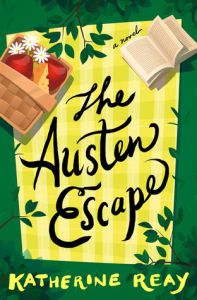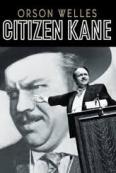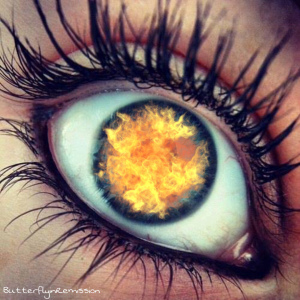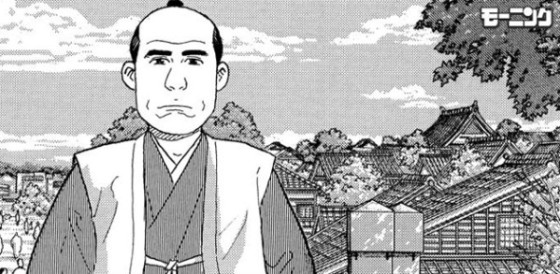
“Cooking puts several kinds of distance between the brutal facts of the matter (dead animal for dinner) and the dining-room table set with crisp linens and polished silver.” –Michael Pollan, Cooked
“ … the stew of meat that’s been cut into geometric cubes and rendered tender by long hours in the pot represents a deeper sublimation, or forgetting of the brutal reality of this particular transaction among species” – Michael Pollan, Cooked
Perhaps you can tell I’m a Michael Pollan fan. I met him, briefly, in Salt Lake City last summer where he was giving a talk and signing his newest book, Cooked. He seemed thoughtful and curious and relatable, like many writers. He struck me as a university English professor gone astray, a life choice close to my heart. Yet when I finally got around to reading Cooked, I found relating to Pollan unexpectedly difficult. A certain intrusive thought kept encroaching on my enjoyment of the book. Michael Pollan is not relevant in China, it whispered.
Pollan writes frequently about the ethics of food, about the fact that death and meat go hand in hand. It’s a particularly Western preoccupation, this constant pondering and angsting over how far away we’ve moved from the destruction of a beast to the satiety of our bellies. Many Chinese would find Pollan’s musings ridiculous because the Chinese, like much of the nonWestern world, still do look their food in the eye.
 Burning the feathers off a chicken in Sichuan Province
Burning the feathers off a chicken in Sichuan Province
Living in China, even if you don’t eat meat, means you, too, will have to start looking food in the eye. In Cooked, Pollan writes, “we moderns are great compartmentalizers, never more so than when hungry.” But he is referring, in unqualified terms, to modern Americans. There is no compartmentalizing about food in China, and it has nothing to do with a lack of moderns. Shanghai is one of the world’s most modern cities, packed with more moderns than most other cities.
Nevertheless, an average dinner at an authentic Chinese restaurant, even in Shanghai, is likely to contain the head, feet and other unmentionable parts of whatever unfortunate creature was on the menu; it probably will not contain neat, “geometric cubes”. It will almost certainly have a heap of atypical bones. In China, the brutal reality of death stares you, quite literally, in the eye: from the sidewalk, at street food stalls, in supermarkets, wet markets, and sometimes with every bite you take.
 An average Chinese meal at an upscale restaurant
An average Chinese meal at an upscale restaurant
In a 2017 CNN interview, the Chinese performance artist Huang Yong Ping, whose controversial artwork Theater of the World was pulled from the Guggenheim in September over protests of animal cruelty, explained that Westerners only know how to relate to animals “as objects of adoration.” He went on to explain that he views such adoration as a form of human “self-adoration.” If he suggested alternative ways of relating to animals, I never got the chance to hear them. As he launched into the political meaning of his exhibit, the Chinese government promptly blacked out my TV.
Yong Ping’s comments highlight a profound philosophical difference between China and America when it comes to the treatment, death and, indeed, the conceptual view of animals. Pollan is right when he says that Americans like their food brutality obscured. American comfort levels with all kinds of death generally fall on the extreme end of the avoidance scale, and our supermarket butcher counters are wiped clean of reference to the once living creatures on sale there. Yet the industrial lives of the animals we eat are often torturous.
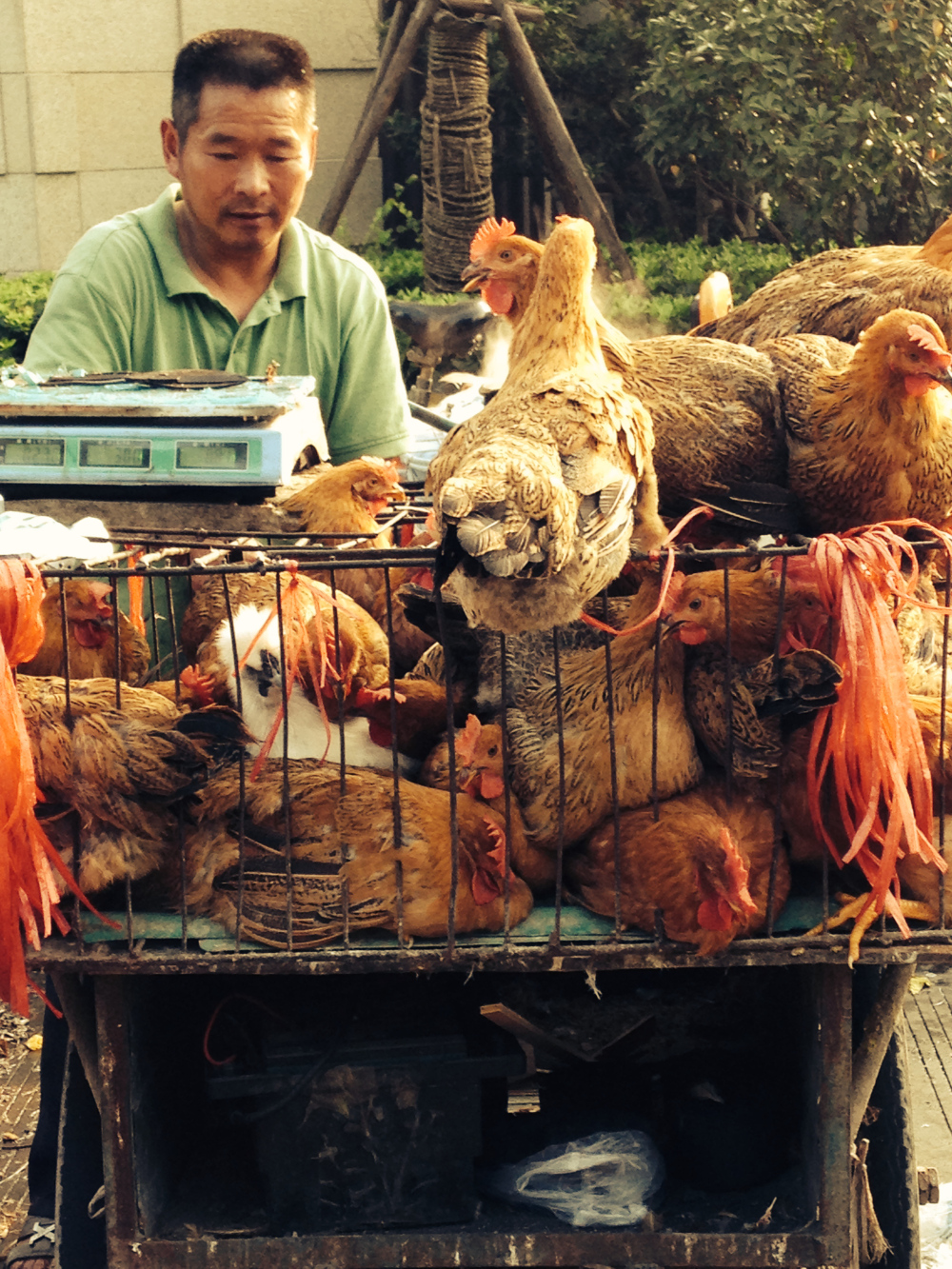 Wet market chickens in Shanghai
Wet market chickens in Shanghai
Isn’t there a happy medium? In America, cracking an egg is an experience so far removed from the living creature that produced the egg that one of my daughters once thought eggs grew on trees. I’m reminded of a story, from my time living in South Carolina, about an elementary classroom that embarked on a cooking lesson only to leave with a biology lesson. The teacher received a batch of eggs from a former colleague, a laid-back “artist- farmer” type known for eccentricity. Apparently he was too laid-back to be diligent about collecting fertilized eggs. When the children cracked their eggs into their mixing bowls, instead of sunny yolks, bloody embryonic chicks plopped out. In America this is a catastrophe. In Asia it’s a delicacy.
The Chinese are extremely comfortable with animal death. Animals in Chinese mythology are often inhabited by spirits or ghosts — ghosts that need to be appeased — and the spirits can be menacing. Hungry Ghosts are appeased, of course, with food. Despite the fact that animals give form to the Chinese zodiac, and Chinese mythology is chock full of animal legends, this ancient folklore doesn’t seem to interfere with general eating habits. The Chinese have made peace with death and sustenance.
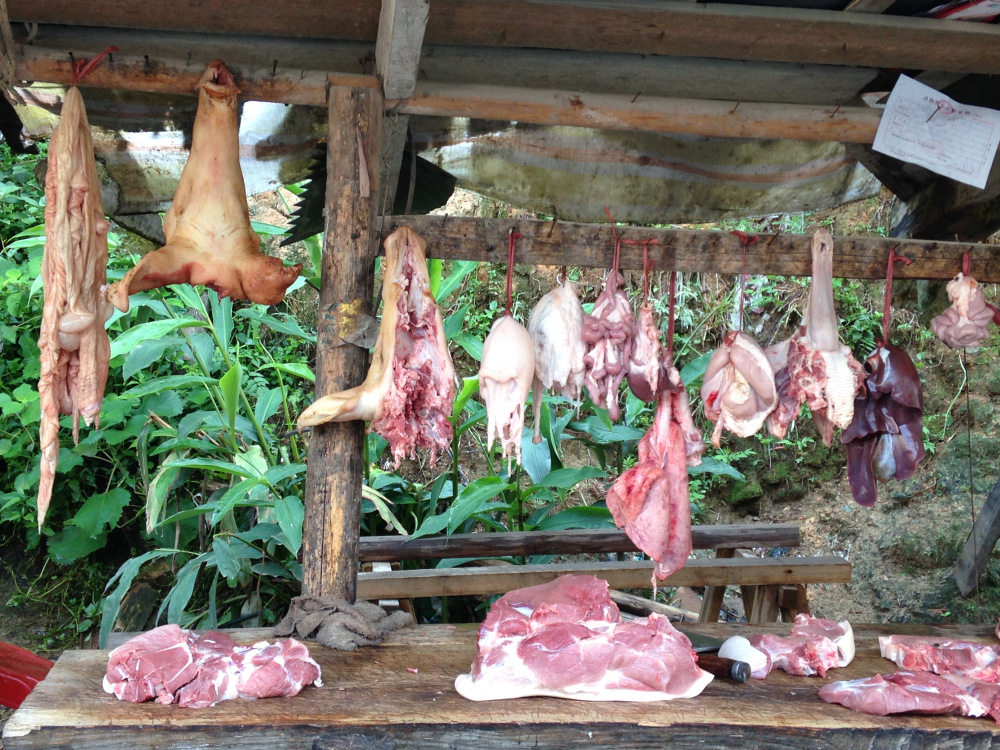 Pork on a roadside meat stand in Sichuan Province
Pork on a roadside meat stand in Sichuan Province
In her memoir The Woman Warrior, the Chinese-American writer Maxine Hong Kingston retells her mother’s tales of “big eaters” in Chinese folklore. As she explains it, capable eaters defeat ghosts. Kingston’s mother told stories of emperors who ate duck tongues and monkey lips. Wei Pang, a historical figure from the T’ang dynasty, whom Kingston calls “the most fantastic eater,” consumes birds, rabbits, scorpions, snakes, cockroaches, worms, slugs, beetles and crickets. In one folktale, Wei Pang kills and cooks (in sesame oil) “a ball of flesh entirely covered with eyes, some rolled back to show the dulling whites.” That really is looking your food in the eye.
Kingston’s portrayal of her family epitomizes the clash of food and animal culture that typifies American and Chinese worldviews. In Chinese folklore, Kingston says, “big eaters win,” and the food myths she tells are often brutal. As a child in the States, instilled with the sensibilities of American culture, Kingston describes hiding under the bed with fingers in her ears “to shut out the bird screams and the thud, thud, of the turtles swimming in the boiling water, their shells hitting the sides of the pot.” She describes her mother dismembering skunks on the kitchen chopping block and cooking animals like raccoons, hawks, and snakes. When Kingston’s mother tells a horrifying and graphic story of the wealthy Chinese eating live monkey brains through a hole in the table (read TC Boyle’s short story, Descent of Man), Kingston describes being “unable to protect” herself. “I would live on plastic,” she concludes.
 Unfortunately, those frogs on the right are still alive
Unfortunately, those frogs on the right are still alive
In Omnivore’s Dilemma, Pollan suggests that the American distance from animal death allows us to ignore the brutality of their lives. “Were the walls of our meat industry to become transparent . . . we would not long continue to raise, kill, and eat animals the way we do,” he laments.
But here’s an alternative idea: when humans become inured to living with the sight of dead animals, of frogs skinned alive in wet markets, and pig heads gazing at us from the sidewalk, it’s not a far leap to find ourselves less outraged with a Chinese dish like Yin Yang Fish. The name, “dead and alive” fish, says it all. The body of the fish is deep-fried, while the head is protected. The fish continues breathing, only to be devoured alive by diners. Humans are brutal creatures all the time — in their mythology and in their daily lives, whether they embrace death or whether they hide from it.
Unlike the Chinese, Americans seem to enjoy their gross-out experiences vicariously, (at a distance), by watching Anthony Bourdain eat warthog anus or swallow a beating cobra heart, but we wouldn’t, generally, discuss eating rats, and especially not dogs, at a dinner table with strangers. In contrast, don’t ask what goes into the hot pot in China was the hilarious lead-in to a completely casual conversation I had in China about eating rats and dogs (and other strange beasts) with a Chinese and Tibetan guide. There was a quality of braggadocio to that conversation — look at the crazy things we’ve eaten, it went. They brought the topic up, not us! (see Mountains, Monks and Monasteries).
While I certainly would never eat Yin Yang Fish, I’m not bothered by looking my animal food in the eye. Pollan’s only relevance in China hinges on the way he writes about food as a great connector of people. Immediately my mind’s eye calls up Chinese throngs at street food stalls and wet markets, where the recently departed consciousness (or still beating hearts) of the food is always on display; these are among the most interesting cultural aspects of life in Shanghai. New research suggests that plants might also experience consciousness, but I won’t stop eating salad.
 Yak parts arrive to the city of Kangding
Yak parts arrive to the city of Kangding
The featured image back in my post Regarding Wulumuqui was of the Chicken Man smoking his cigarette outside his shop. Just after I snapped that photo, he smoked his cig down to the nub, fingers right up to his lips, then without washing his hands, he picked up the chicken I selected. In addition to potential infection with e-coli and HIN9, my chicken now had his saliva and tobacco on it. He placed it on a wooden chopping block — the entrails were still inside — and prepped it for me: sliced, guts pulled out and into a pile, feet stuffed into the cavity. With his slimy, gut-covered chicken hands, he dropped the bird into a plastic grocery bag and handed the wet bag to me. I held it with my right hand, which was now also touching chicken entrails, or at least the bacteria remnants. I thought, well, I won’t be able to touch anything with this hand until I get home.
And by the way, his chickens, which are cheaper, tougher (from exercise), and tastier than American chickens chock full of antibiotics and saline solution, haven’t killed me yet. Even in the twenty-first century, we always take a chance when we eat.
Pollan says, “When chickens get to live like chickens they’ll taste like chicken too.” He’s right. They do. I’m glad to give my business to the Chicken Man, and I’m comfortable looking those birds in the eye. Unfortunately, he will go out of business someday. Industrial animal farms are coming to China, and when they do, Michael Pollan can be relevant here, too. Eventually, the Chinese will move as far away from looking their food in the eye as we Americans. I’m glad that day hasn’t arrived yet.
 The Chicken Man preps my bird
Share this with your friends
The Chicken Man preps my bird
Share this with your friends